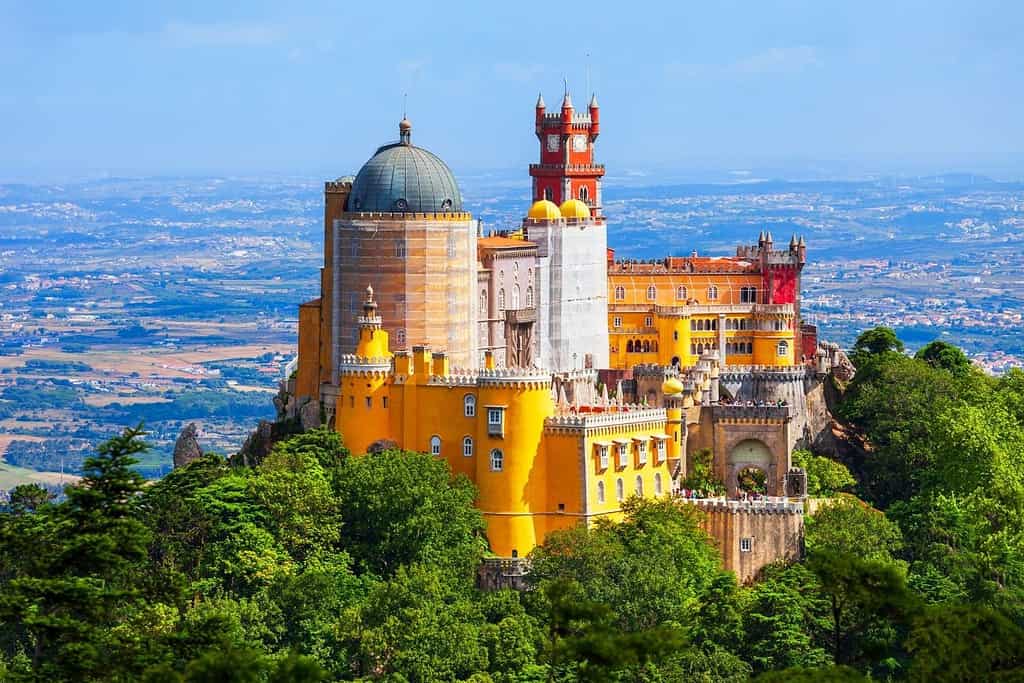Table of Contents
Where is Portugal located? Portugal is a country located in Europe, in the southwestern part of the European continent. It is not among the largest countries in Europe but is renowned for its rich history and cultural influence.
Portugal is situated on the western coast of the Iberian Peninsula, bordering the Atlantic Ocean to the west. It shares a land border with only one neighboring country. To the east and north, it shares borders with Spain. The southern and western parts are bounded by the Atlantic Ocean, giving it a vast coastal line.
Where is Portugal located: Europe.
Location of Portugal on the World Map
Portugal World
Map of Portugal.
Portugal Profile – Where is Portugal located
Here are 10 of the most important facts about Portugal:
- Official Name: Portuguese Republic
- Capital City: Lisbon
- Population: Approximately 10 million (as of 2021)
- Official Language: Portuguese
- Currency: Euro (EUR)
- Major Religion: Christianity (predominantly Catholic with minorities of Protestants and others)
- Government: Unitary semi-presidential republic
- Area: Approximately 92,090 square kilometers
- GDP (Gross Domestic Product): $237 billion (as of 2021)
- Main Exports: Agricultural products (olive oil, cork, wines), fish, textiles and apparel, machinery, and chemical products.

Borders of Portugal
Portugal shares land borders with one country.
| Bordering Country | Approximate Length of Border (in kilometers) |
|---|---|
| Spain | 1,214 km |
Portugal Map
Navigate over this map with your mouse to discover Portugal’s map location.
Portugal
Most Extreme Points of Portugal
Portugal features several extreme points in different directions:
- Northernmost Point: Close to the border with Spain, to the north of the town of Cerveira.
- Southernmost Point: The point on the Atlantic Ocean coastline, at the Island of Ilha de Tavira, Algarve.
- Easternmost Point: Close to the border with Spain, near the town of Miranda, do Douro.
- Westernmost Point: The point on the Atlantic Ocean coastline, at Cabo da Roca, Sintra.
Highest Points of Portugal
The highest point in Portugal is Mount Pico, reaching an elevation of approximately 2,351 meters above sea level. It is part of the Azores archipelago.
| No. | Mountain | Elevation (meters) |
|---|---|---|
| 1 | Mount Pico | 2,351 |
| 2 | Serra da Estrela | 1,993 |
| 3 | Serra de São Mamede | 1,025 |
| 4 | Serra do Marão | 1,415 |
| 5 | Serra do Gerês | 1,547 |
How big is Portugal?
Portugal covers an area of approximately 92,090 square kilometers, making it the 110th largest country in the world.
Comparison with Neighboring Countries
Here is a comparison of Portugal with its neighboring country (Spain) based on approximate size and population as of 2021:
| Country | Approximate Size (sq. km) | Approximate Population | Portugal’s Size Compared to Neighboring Country | Portugal’s Population Compared to Neighboring Country |
|---|---|---|---|---|
| Spain | 505,992 | 47.4 million | 5.5 times smaller | 2.2 times smaller |
What to Visit in Portugal?
Argentina boasts a blend of rich history, vibrant culture, and varied landscapes. Here are the top 10 tourist attractions:
- Lisbon: The capital and largest city of Portugal, known for its historic neighborhoods like Alfama and Bairro Alto, the iconic Tram 28, and the Belém Tower.
- Porto: Renowned for its port wine, the Dom Luís I Bridge, and the historic Ribeira District, this northern city beautifully blends tradition and modernity.
- Algarve: This southern region is famous for its stunning beaches, limestone caves, and seaside towns such as Lagos and Albufeira.
- Sintra: Home to the colorful Pena Palace and the Moorish Castle, Sintra offers a fairy-tale landscape and is a UNESCO World Heritage Site.
- Madeira: An archipelago in the Atlantic Ocean, Madeira is known for its lush landscapes, Levada walks, and the annual flower festival.
- Coimbra: A historic city along the Mondego River, it’s home to one of the world’s oldest universities and the Joanina Library.
- Azores: This group of islands in the middle of the Atlantic is a paradise for nature lovers, known for its volcanic landscapes, hot springs, and whale watching.
- Évora: Located in the Alentejo region, Évora is renowned for its Roman Temple, Chapel of Bones, and medieval walls.
- Douro Valley: This is where the famous Port wine originates. The valley is dotted with picturesque vineyards, traditional quintas, and terraced landscapes along the Douro River.
- Óbidos: A charming medieval town surrounded by walls, known for its narrow streets, historic castle, and the annual chocolate festival.
These Portugal destinations provide a broad spectrum of experiences, from delving into Portugal’s rich history and cultural heritage to admiring its diverse natural beauty. Please remember that some places might have specific restrictions or entry requirements, especially during certain times of the year or due to preservation efforts, so it’s crucial to check before planning your visit.
